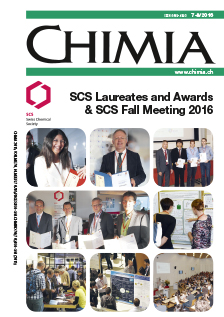Daring the Challenge and Thinking Big: The Value of Early Process R&D
DOI:
https://doi.org/10.2533/chimia.2016.502Keywords:
Chiral dienes, Diels-alder, Flow chemistry, Organocatalysis, Process safety, Qbd, Scale-upAbstract
The production of the L/T channel blocker ACT-280778 required the enantiomerically pure 5-phenylbicyclo[2.2.2]oct-5-en-2-one (1) as key building block. As the published routes towards 1 are very low yielding (<0.5% yield) and comprise many steps that are not acceptable for scale-up, a series of processes to 1 was developed to match the increasing requirements from first kg-batches to clinical supplies. The three routes are characterized by an individual asset. (1) The first route contains a scale-up of a Diels–Alder reaction with highly reactive reagents and afforded 90 kg enantiomerically pure 1. To mitigate safety risks, a flow reactor was developed for the high-temperature Diels–Alder reaction. This route relied on an efficient enantiomer separation on a ¼-ton scale by HPLC. (2) A Crystallization Induced Diastereomer Transformation (CIDT) during an intramolecular aldol reaction was the pivotal step of a first enantioselective route that starts with the Shibasaki reaction. (3) The 2nd enantioselective route represents a rare example of organocatalysis on scale and allowed to skip six out of nine steps with a significant impact on the cost of goods. This simple way to 1 opened up a short synthesis of Hayashi's chiral diene ligands (bod*) that were so far lacking an affordable access. Some of these novel C1-symmetrical dienes have shown very high enantioselectivities in Rh-catalyzed additions of arylboronates.Downloads
Published
2016-08-24
Issue
Section
Scientific Articles
License
Copyright (c) 2016 Swiss Chemical Society

This work is licensed under a Creative Commons Attribution-NonCommercial 4.0 International License.
How to Cite
[1]
Chimia 2016, 70, 502, DOI: 10.2533/chimia.2016.502.







